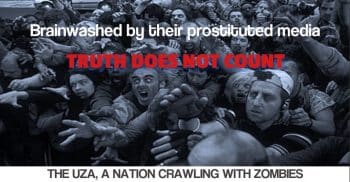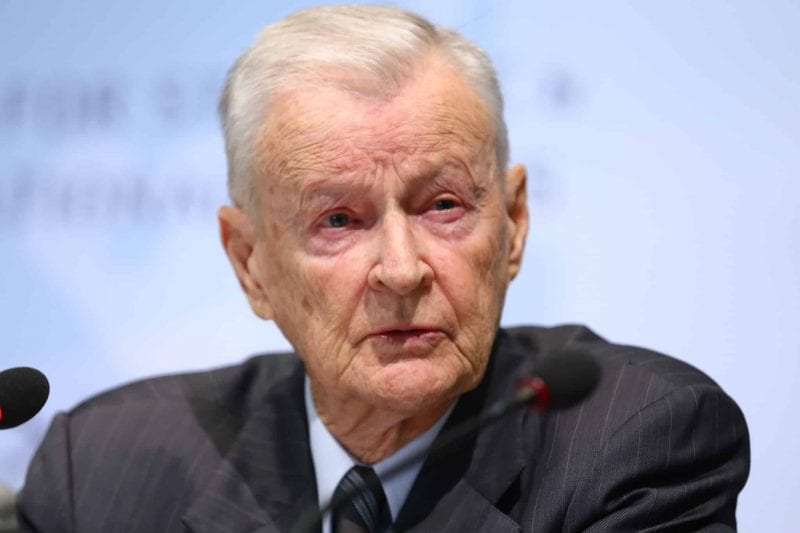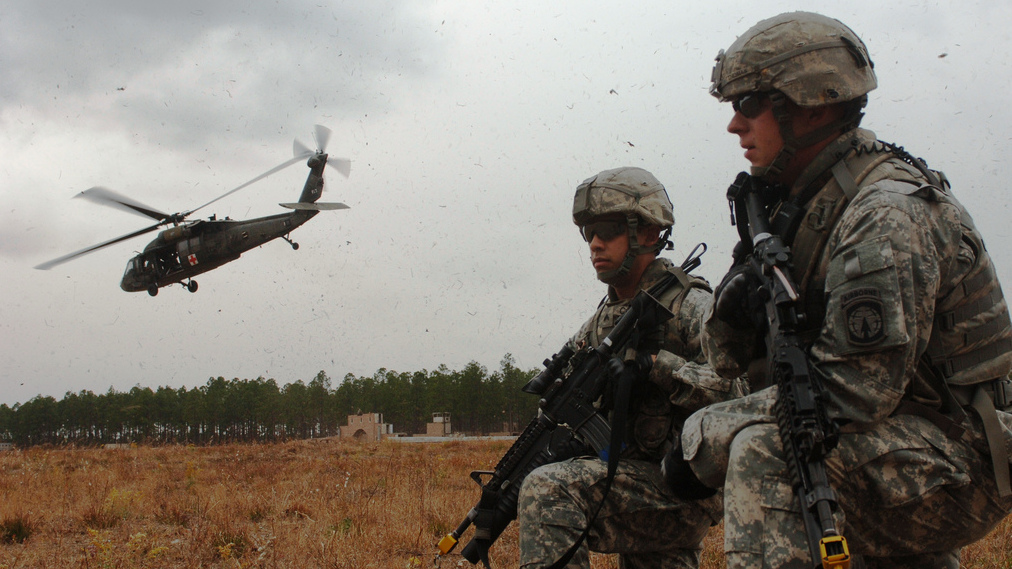 Dateline: October 8, 2015 | http://www.mintpressnews.com/exporting-revolution-zbigniew-brzezinski-on-trial-at-the-un-general-assembly/210126/
Dateline: October 8, 2015 | http://www.mintpressnews.com/exporting-revolution-zbigniew-brzezinski-on-trial-at-the-un-general-assembly/210126/
WITH A SPECIAL ADDENDUM DOCUMENTING CBS NEWS PROPAGANDA FOR THE MUJAHEDEEN
![]()
 Is an American journalist and political analyst. Tasnim News Agency described him as "a native of Ohio who has campaigned against war and the U.S. financial system." His political activism began while attending Baldwin-Wallace College in Ohio. In 2010, he video recorded a confrontation between Collinwood High School students who walked out to protest teacher layoffs and the police. His video footage resulted in one of the students being acquitted in juvenile court. He was a figure within the Occupy Wall Street protests in New York City. Maupin writes on American foreign policy and other social issues. Maupin is featured as a Distinguished Collaborator with The Greanville Post. READ MORE ABOUT CALEB MAUPIN HERE.
Is an American journalist and political analyst. Tasnim News Agency described him as "a native of Ohio who has campaigned against war and the U.S. financial system." His political activism began while attending Baldwin-Wallace College in Ohio. In 2010, he video recorded a confrontation between Collinwood High School students who walked out to protest teacher layoffs and the police. His video footage resulted in one of the students being acquitted in juvenile court. He was a figure within the Occupy Wall Street protests in New York City. Maupin writes on American foreign policy and other social issues. Maupin is featured as a Distinguished Collaborator with The Greanville Post. READ MORE ABOUT CALEB MAUPIN HERE.
ADDENDUM BY FAIR (Fairness in Reporting)
Biased Afghan Coverage at CBS
Print Media Protect Rather
[dropcap]D[/dropcap]espite mainstream journalists’ claim of strict objectivity in covering the news, they make exceptions: Some stories are covered without even the pretense of neutrality. Dan Rather and CBS News, for example, adopted a cause throughout the 1980s–that of the Afghan mujahedeen. Sloppiness in the advocacy of that cause created a recent scandal for the network.

Rather: Showing his imperialist propaganda slip, par for the course among most US “professional journalists.”
Beginning September 27, a series of articles by Janet Wilson in the New York Post charged that Dan Rather’s CBS newscasts had repeatedly “aired fake battle footage and false news accounts” of the Afghan War. Among the charges:
Fakery: CBS presented staged “action-packed commando” footage in which Afghan mujahedeen performed as actors in sequences purporting to show rebel advances, such as blowing up electric lines leading to Kabul. Scenes of mujahedeen stalking enemy positions and blowing up a mine were acted out and filmed in the safety of a Pakistani training camp. A Pakistani Air Force jet on a training mission was presented as “a Soviet jet bombing Afghan villages.”
Invention: CBS News aired a segment in 1987 showing a bomb made to look like a toy allegedly planted by Soviet soldiers to injure Afghan children. The Post cited an unnamed BBC producer claiming the bomb-toy had been created for the CBS cameraman.
Distortion: On August 11, 1987, Dan Rather presented combat footage purporting to show what he described as “the biggest one-day defeat for Soviet forces since World War II,” killing 800 Soviet troops. In reality, the battle was small and didn’t involve Soviet forces.
The Post articles centered around Mike Hoover, a freelance cameraman responsible for much of CBS’s suspect footage. Hoover, a self-proclaimed mujahedeen partisan, saw himself more as a filmmaker than a neutral newsman (L.A. Times, 7/29/87). According to the Post, Hoover orchestrated war scenes and encouraged mujahedeen to exaggerate their victories. The Post found no evidence that CBS News knowingly aired false or fake news.
In 2003, during the ramp-up to war with Iraq, and in the jingoist fervor after 9/11, Rather was proud “to report for duty”, pledging total allegiance to the Pentagon’s actions on several late night talk shows. So much for the standards of impartiality, elementary professionalism or even simple decency of the mainstream media.
FAIR, which had long criticized CBS Afghan coverage, issued a statement attributing CBS‘s sloppy reporting (which consistently overstated rebel strength) to the network’s pro-mujahedeen sympathies: “CBS coverage often resembled partisan war propaganda more than reporting. Rather’s role appeared to be more that of a cheerleader than a journalist. Issues behind the conflict (such as Islamic fundamentalism and the role of women) were secondary to the ‘shoot-em-up’ war footage. Was CBS so hungry for footage of mujahedeen battle successes that it failed to closely scrutinize it? Did CBS make itself a tool of the guerrillas’ propaganda?”
Given the brutality of the Soviet occupation, it’s understandable that journalists might sympathize with those resisting occupation. But the TV networks profess to be neutral. FAIR questioned how long journalists would last at CBS–whether cameraman or anchor–if their coverage tilted towards insurgencies opposed by U.S. policy: the PLO, the FMLN in El Salvador, or even South Africa‘s ANC guerrillas. Of all the guerrilla movements in the world, it’s not surprising that the CBS anchorman became “obsessed” only with one receiving the unwaivering support of the U.S. government. “Afghanistan was Rather’s obsession,” remarked Richard Cohen, a former senior foreign news producer at CBS. (A Congressional Research Service report found CBS devoted far more coverage to Afghanistan than the other networks: 1986–CBS 55.2 minutes, NBC 28.8, ABC 19.7).
In covering the “CBS Afghaniscam” story, most TV beat reporters treated CBS reverentially, avoided obvious issues of bias and partisanship, and focused instead on narrow issues like Mike Hoover’s ethics or whether TV networks can trust freelance cameramen overseas. Few asked whether Rather’s pro-mujahedeen bias gave a green light to Hoover and others in the field, and caused a suspension of journalistic skepticism when the footage arrived.
Most reporters did little digging of their own, content to play it as a “New York Post Alleges/CBS Denies It” story. Several dailies, most notably the New York Times, layered teflon on CBS by repeatedly publishing the substanceless denials of unnamed network employees during the week CBS was supposedly not commenting on the matter. One of the Times‘ CBS sources (9/29/89) linked the charges to a Soviet “disinformation campaign” against Rather.
Initially, unnamed CBS executives had promised the Times (9/29/89) and other journalists a “point by point” refutation of the Post charges as soon as their investigation was completed. Instead, CBS ended up issuing nothing more than a bland 87-word statement affirming the “integrity” of its coverage of “that distant war back then.” It admitted only the “unintentional use of a misidentified aircraft”–the Pakistani training jet standing in for a Soviet bombing jet. CBS made Mike Hoover available to reporters to deny some of the charges of staging, but most specifics–like the alleged toy-bomb and the misreporting of the “biggest one-day” Soviet defeat–were never addressed at all. Case closed.
When FAIR asked CBS spokesman Tom Goodman what had happened to the point-by-point refutation, he denied that such was ever promised, implying that the Times and other reporters had invented or misreported the promise. CBS‘s cover-up was made possible by the lack of follow-up by the same reporters who’d relied on unnamed CBS sources in the first place. Curious reporters would be pursuing the following areas:
CBS Knowledge of Hoover’s Dubious Reliability: After the 1985 article in Outside magazine discussed Hoover’s faking of scenes in adventure films, then-CBS News President Ed Joyce and Dan Rather exchanged memos about the cameraman, with Rather vouching for Hoover’s integrity. The memos were published by columnist Frank Swertlow in the L.A. Daily News (9/29/89). Swertlow reported (10/2/89) that a rival TV network refused to hire Hoover after he admitted staging Afghan battle footage. In 1987, CBS was notified that it had aired a Hoover story containing footage shot by an Afghan rebel as part of a USIA-sponsored project at Boston University. It’s illegal to air USIA footage in the U.S. (BU Daily Free Press, 9/30/87; Boston Globe, 10/30/87).
Pattern of Inflating Mujahedeen: When Rather inflated a small battle into “the biggest one-day defeat for Soviet forces since World War II” (8/11/87), Boston University Communications dean Joachim Maitre, a militant pro-mujahedeen partisan, pointed out that the skirmish didn’t even involve Soviet troops. Asked how CBS could have made such an error, Maitre told Extra!: “Perhaps wishful thinking was determining their interpretation.” The pattern continued post-Hoover with the 4-part series, “Afghanistan: The Soviet Failure” (CBS Evening News, 12/5-8/88), which suggested, as Rather put it, that it was “the beginning of the end” for the Kabul government.
Partisans With Cameras: Hoover was not the only partisan covering Afghanistan on retainer for CBS. Another was cameraman/journalist/right-wing activist Kurt Lohbeck, who when not dispatching stories to CBS, was testifying (2/25/85) before Congress, using his video footage to plead for more military aid to the “freedom fighters.” He set up news conferences for the mujahedeen leaders and introduced them to members of Congress. A declassified 1986 State Department memo orchestrating media appearances for an Afghan rebel leader visiting the U.S. referred to Lohbeck as “CBS Afghanistan specialist” and to Hoover as the person “who will contact Dan Rather.” A Wall Street Journal article by Mary Williams Walsh casting a critical eye on CBS reliance on Lohbeck and Hoover was squashed by Journal editors.
One CBS report now called into question is the documentary “The Battle for Afghanistan” (7/29/87), narrated by Dan Rather. CBS listed Mike Hoover as the “director/cinematographer.” TV critics were almost unanimous in marveling at the documentary’s “spectacular,” “unreal,” “movie-like” combat footage, while complaining about the fuzziness of the narration. Arthur Unger drew this conclusion for the Christian Science Monitor:
 Most of the leftists who had protested the Vietnam War in the U.S. and Europe were attracted to the romantic Che Guevara-esque image of “holy warriors” in the Afghan mountains. Meanwhile, the minority of radicals who denounced the mujahedeen were labelled “Stalinists” and “Soviet apologists.” With the excuse of “Soviet aggression in Afghanistan,” Carter was able to reinstate draft registration for young men across the U.S., boycott the 1980 Olympic Games, and increase military spending.
Most of the leftists who had protested the Vietnam War in the U.S. and Europe were attracted to the romantic Che Guevara-esque image of “holy warriors” in the Afghan mountains. Meanwhile, the minority of radicals who denounced the mujahedeen were labelled “Stalinists” and “Soviet apologists.” With the excuse of “Soviet aggression in Afghanistan,” Carter was able to reinstate draft registration for young men across the U.S., boycott the 1980 Olympic Games, and increase military spending.








Caleb, I posted your first articles to Opednews, and knew you were going somewhere. Did your debate hapen while I was away? Now, more than ever “‘Truth'” matters, and I think we’re working up to something across the progressive spectrum.
I ran up against Zbig nearly every day when I was briefly a speech writer for the Assistant Secretary for International Affairs (see Fulbright program), and literally watched him eat Carter’s pick for Russian specialist alive. A lot of people are going to feel a lot better going forward.